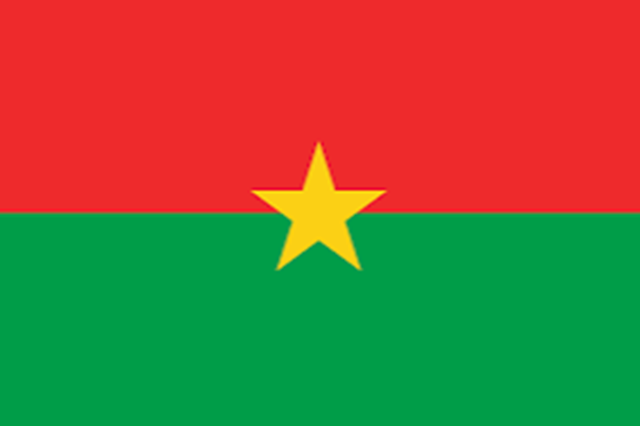Ouagadougou – The West African state of Burkina Faso is in the grip of a jihadist insurgency that has claimed thousands of lives and inflicted devastating damage to one of the world’s poorest countries.
Here are key facts on the crisis, now in its eighth year.
First attacks
Initially spared from the jihadist bloodshed shaking neighbours Niger and Mali, Burkina Faso experienced its first attack in April 2015, when the Romanian security chief of a manganese mine in the north of the country was kidnapped.
Nine months later, the capital Ouagadougou came under assault. Thirty people, half of them foreigners, died in attacks on locations frequented by Westerners.
The operation was claimed by Al-Qaeda in the Islamic Maghreb (AQIM), an armed group dating to the jihadist unrest in Algeria in the 1990s.
Fifty people died in attacks in Ouagadougou in August 2017 and March 2018, the latter of which targeted the French embassy and Burkina’s military headquarters.
Mounting toll
Over the past three years, the frequency and bloodiness of attacks have risen, characterised by massacres in remote villages by highly mobile bands of jihadists travelling on motorbikes.
Burkina’s Democracy and Human Rights Observatory and a US-based NGO, the Armed Conflict Location & Event Data Project (ACLED), estimate the death toll since 2015 at between 10 000 and nearly 12 000.
The bloodiest attack so far was on June 4-5, 2021, when 160 civilians were massacred at Solhan in the northern province of Yagha.
In early 2022, Burkina Faso experienced 20-30 attacks per week on average, said security expert Mahamoudou Savadogo.
Today, the rate is “30-40” per week, and the number of affected regions has increased, he said.
The suspected attackers are linked to Al-Qaeda or the so-called Islamic State group.
Jean-Marc Gravellini, a researcher at France’s Institute of International and Strategic Relations (IRIS), said jihadists exploited landlocked Burkina’s porous borders with Mali to mount cross-border incursions.
But the country’s huge population of poor jobless youths also provides the militants with a deep pool for recruitment, Gravellini said.
Political turbulence
Even before the insurgency, Burkina had the reputation of being one of the world’s most volatile countries, enjoying little stability since independence from France in 1960.
Political turmoil has since accelerated, driven by anger within the military at the failure to roll back the jihadists.
On January 24, 2022, officers led by Lieutenant-Colonel Paul-Henri Sandaogo Damiba overturned the country’s elected president, Roch Marc Christian Kabore.
Little more than eight months later, Damiba himself was overthrown by a 34-year-old captain, Ibrahim Traore, who became the world’s youngest head of state outside royalty.
Mobilisation
Traore has vowed to recover state control over land “occupied” by the jihadists, which amounts to around 40 percent of the country.
His main thrust has been to expand a civilian militia, the Volunteers for the Defence of the Fatherland (VDP), which supports the country’s beleaguered armed forces.
A recruitment drive last year drew 90 000 would-be volunteers, nearly twice the target of 50 000.
Like his junta counterparts in Mali, Traore has fallen out with France, which is pulling its forces out of the country – a prelude, some speculate, to bringing in mercenaries from Russia’s Wagner outfit.
Humanitarian disaster
Around two million of Burkina Faso’s population of 22 million have been displaced by the conflict.
In November, the UN’s World Food Programme (WFP) estimated that nearly 3.5 million people would need emergency food aid in the coming months.
Idrissa Badini, a spokesman for civil society groups in the jihadist-torn northern region of Soum, said the situation was “catastrophic” in the town of Djibo, which has taken in nearly a seventh of the country’s displaced people.
“Hunger has reached the point where it is starting to kill children and the elderly,” he said.
Supply convoys to the town are rare and frequently come under attack.
Follow African Insider on Facebook, Twitter and Instagram
Source: AFP
Picture: Pixabay
For more African news, visit Africaninsider.com


